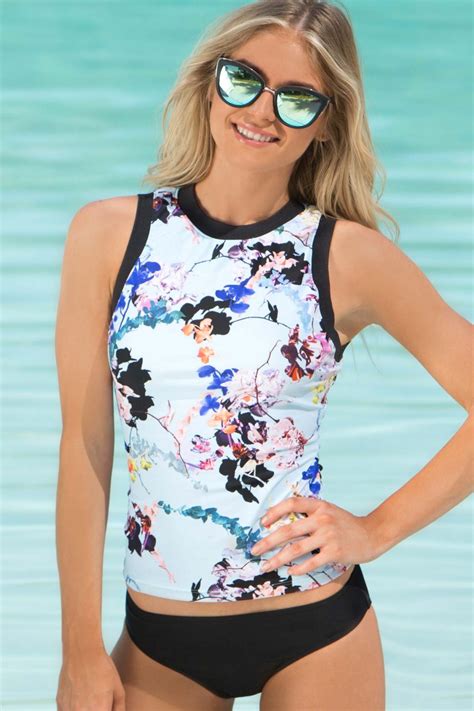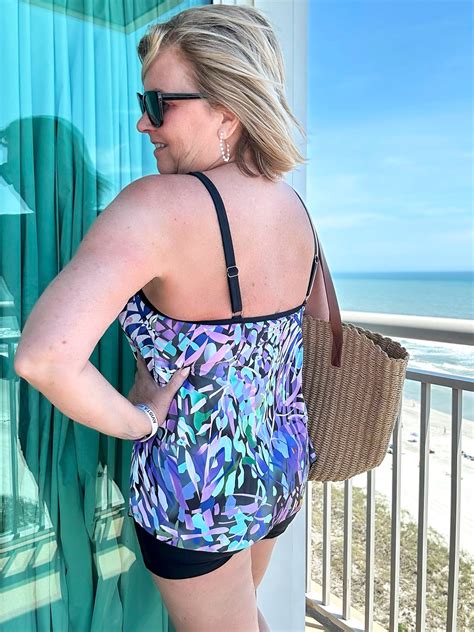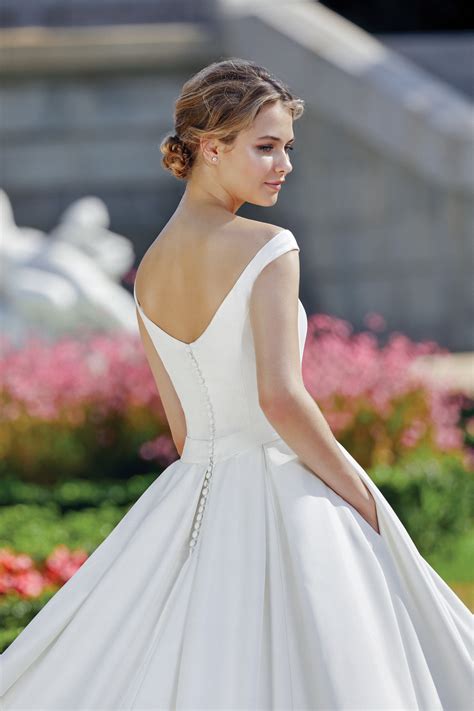
Tankinis are surging in popularity this summer, igniting a fresh debate about modesty in swimwear and whether they represent a contemporary take on conservative dressing or simply a practical and stylish alternative to bikinis and one-piece suits. Social media platforms are buzzing with opinions, as consumers and fashion commentators weigh in on the trend’s implications for body image and personal expression.
The tankini, a two-piece swimsuit consisting of a tank top and bikini bottom, is experiencing a renaissance, prompting discussions about its role in the evolving landscape of swimwear fashion. While some view it as a modest option that provides more coverage than a traditional bikini, others argue that it still allows for self-expression and body positivity. The debate highlights the diverse perspectives on modesty and the complexities of navigating personal style choices in a public forum.
According to Yahoo Life, the resurgence of the tankini comes at a time when conversations around body inclusivity and diverse representation in the fashion industry are gaining momentum. Many consumers are seeking swimwear options that make them feel comfortable and confident, regardless of their body type or personal preferences.
“I haven’t worn a bathing suit in probably 15 years, and I saw this tankini top online, and I was like, that is so cute. I feel like I can wear that,” said one TikTok user in a video showcasing her new purchase. This sentiment reflects a broader desire for swimwear that balances style and comfort.
The trend also taps into a growing interest in practical and versatile clothing options. Tankinis can be easily mixed and matched with different bottoms, allowing for a variety of looks and levels of coverage. This adaptability appeals to consumers who value functionality and personalization in their wardrobes.
However, the debate surrounding tankinis also raises questions about the pressure to conform to certain standards of modesty. Some critics argue that labeling the tankini as a “modest” option reinforces the idea that certain body parts should be concealed, perpetuating harmful stereotypes and limiting women’s freedom to express themselves.
“The term ‘modest’ can be loaded,” says fashion blogger Sarah Jones. “While some women genuinely prefer more coverage, others may feel pressured to choose ‘modest’ options due to societal expectations or religious beliefs. It’s important to remember that personal style is a personal choice, and no one should be judged for what they choose to wear.”
The tankini trend reflects a broader cultural shift towards greater body acceptance and inclusivity, but it also highlights the ongoing tensions between personal expression and societal expectations. As consumers continue to embrace diverse styles and challenge traditional norms, the debate surrounding tankinis is likely to evolve and adapt.
The History of the Tankini:
To fully understand the current tankini trend, it’s essential to delve into its history. The tankini emerged in the late 1990s as a response to the growing demand for swimwear that offered more coverage than a bikini but was more practical and comfortable than a one-piece swimsuit. Designer Anne Cole is often credited with popularizing the tankini with her 1998 collection, which aimed to provide women with a versatile and flattering swimwear option.
Cole recognized that many women felt self-conscious in traditional bikinis but didn’t want to sacrifice style or freedom of movement. The tankini offered a compromise, providing coverage for the torso while still allowing for a two-piece silhouette. The design quickly gained popularity, appealing to women of all ages and body types.
Over the years, the tankini has undergone various transformations, with designers experimenting with different fabrics, cuts, and embellishments. Today, tankinis are available in a wide range of styles, from sporty and functional to glamorous and sophisticated. They can be found in department stores, specialty boutiques, and online retailers, catering to a diverse range of tastes and preferences.
The Modesty Debate:
The debate surrounding tankinis and modesty is complex and multifaceted. The concept of modesty varies widely across cultures, religions, and personal beliefs. What one person considers modest, another may view as revealing.
In some cultures, modesty is primarily associated with religious or traditional values, emphasizing the importance of concealing certain body parts to avoid attracting unwanted attention or violating social norms. In other cultures, modesty may be more closely linked to personal comfort and self-esteem, with individuals choosing to dress in a way that makes them feel confident and secure.
The tankini often occupies a middle ground in these discussions. While it provides more coverage than a bikini, it still reveals the midriff and legs, which may be considered immodest by some. The question of whether a tankini is truly “modest” ultimately depends on individual interpretation and cultural context.
Body Image and Self-Expression:
The tankini trend is also intertwined with broader conversations about body image and self-expression. In a society that often promotes unrealistic beauty standards, many women struggle with body insecurities and anxieties. Swimwear, in particular, can be a source of stress and self-consciousness.
The tankini can be seen as a way for women to reclaim their bodies and embrace self-acceptance. By offering more coverage and support, it can help women feel more comfortable and confident in their own skin. However, it’s important to recognize that the tankini is not a magical solution to body image issues. True self-acceptance comes from within, and it’s essential to cultivate a positive and compassionate relationship with one’s body.
Furthermore, the tankini allows for a range of self-expression. The ability to mix and match tops and bottoms gives individuals the freedom to create unique and personalized looks. This versatility appeals to those who value individuality and want to express their personality through their clothing choices.
The Role of Social Media:
Social media platforms have played a significant role in the resurgence of the tankini and the accompanying debate. Platforms like TikTok, Instagram, and Pinterest have become hubs for sharing fashion inspiration, styling tips, and personal opinions. The hashtag #tankini has garnered millions of views, showcasing a wide range of styles and body types.
Social media has also provided a space for consumers to voice their opinions and engage in discussions about modesty, body image, and self-expression. While these conversations can be empowering and informative, they can also be fraught with negativity and judgment. It’s important to approach social media with a critical eye and to be mindful of the potential impact on one’s mental health and self-esteem.
The Future of Swimwear:
The tankini trend reflects a broader shift in the swimwear industry towards greater inclusivity and diversity. Consumers are demanding more options that cater to a wider range of body types, ages, and personal preferences. Brands are responding by offering a greater variety of styles, sizes, and coverage levels.
In the future, we can expect to see even more innovation in swimwear design, with designers exploring new fabrics, technologies, and construction techniques. Sustainability will also be a key focus, as consumers become more aware of the environmental impact of their clothing choices.
The debate surrounding tankinis is likely to continue as long as questions of modesty, body image, and self-expression remain relevant. However, the trend itself represents a positive step towards a more inclusive and empowering swimwear landscape, where individuals feel free to express themselves and embrace their bodies.
Expert Opinions:
Several fashion experts and psychologists have weighed in on the tankini trend, offering insights into its significance and implications.
- Fashion Psychologist Dr. Jennifer Baumgartner: “Clothing is a form of communication, and swimwear is no exception. The tankini allows women to express themselves in a way that feels authentic and comfortable, while also navigating societal expectations.”
- Fashion Stylist Stacy London: “The tankini is a versatile and flattering option for women of all ages and body types. It’s important to choose a style that makes you feel confident and comfortable, regardless of what others may think.”
- Body Image Activist Ashley Graham: “Every body is a beach body. Wear what makes you feel good and don’t let anyone tell you otherwise.”
These experts emphasize the importance of self-acceptance, personal expression, and challenging societal norms. They encourage women to embrace their bodies and to choose swimwear that makes them feel empowered and confident.
The Tankini’s Appeal Beyond Modesty:
While the modesty aspect of the tankini is a key point of discussion, its appeal extends beyond that. Many women appreciate the tankini for its practicality and versatility. It offers more sun protection than a bikini, covering the torso and reducing the risk of sunburn. It can also be easily paired with shorts or a skirt for a casual beach-to-street look.
For women who have undergone surgery or have scars they prefer to conceal, the tankini provides a comfortable and stylish way to do so. It can also be a good option for pregnant women who want a swimsuit that offers more support and coverage.
The tankini’s versatility also makes it a cost-effective choice. By mixing and matching different tops and bottoms, women can create a variety of looks without having to purchase multiple swimsuits.
Analyzing the “Modesty” Label:
The use of the term “modest” to describe the tankini is not without its problems. As some critics point out, labeling certain swimwear as “modest” can perpetuate the idea that certain body parts should be hidden. This can be particularly harmful to young girls and women who may already be struggling with body image issues.
It’s important to remember that modesty is a subjective concept and that what one person considers modest, another may not. The focus should be on empowering women to make their own choices about what they wear, without feeling pressured to conform to societal expectations.
Instead of focusing on the “modesty” label, it may be more helpful to think of the tankini as a versatile and practical swimwear option that offers more coverage than a bikini. This framing emphasizes the positive aspects of the tankini without reinforcing harmful stereotypes.
The Tankini in Pop Culture:
The tankini has made appearances in various forms of pop culture, from movies and TV shows to music videos and fashion magazines. These appearances have helped to normalize the tankini and to showcase its versatility and style.
In some cases, the tankini has been used to challenge traditional notions of beauty and sexuality. For example, in the movie “Blue Crush,” the main character wears a tankini while surfing, demonstrating that swimwear can be both functional and fashionable.
In other cases, the tankini has been used to promote body positivity and self-acceptance. For example, several celebrities have been photographed wearing tankinis, sending a message to their fans that it’s okay to embrace their bodies and to wear what makes them feel good.
The Impact of Age:
Age also plays a role in the tankini trend. While younger women may be drawn to the tankini for its style and versatility, older women may appreciate it for its coverage and support.
As women age, their bodies change, and they may feel less comfortable wearing revealing swimwear. The tankini offers a way to enjoy swimming and other water activities without feeling self-conscious. It can also provide more support for the bust and tummy, which can be particularly important for older women.
However, it’s important to remember that age is just a number and that women of all ages should feel free to wear whatever makes them feel good. The tankini is just one of many swimwear options available, and it’s up to each individual to decide what works best for them.
The Environmental Considerations:
As consumers become more aware of the environmental impact of their clothing choices, sustainability is becoming an increasingly important factor in the swimwear industry. Many brands are now offering tankinis made from recycled materials, such as recycled plastic bottles or fishing nets.
These eco-friendly tankinis are not only good for the environment, but they can also be just as stylish and comfortable as traditional tankinis. By choosing sustainable swimwear, consumers can reduce their environmental footprint and support brands that are committed to ethical and responsible production practices.
The Role of Inclusivity:
Inclusivity is another key trend in the swimwear industry. Brands are now offering tankinis in a wider range of sizes and styles to cater to a more diverse range of body types.
This is a positive development, as it allows more women to find swimwear that fits them well and makes them feel confident. In the past, many women have struggled to find swimwear that fits properly, leading to feelings of frustration and self-consciousness.
By offering a wider range of sizes and styles, brands are sending a message that all bodies are beautiful and that everyone deserves to feel good in their swimwear.
The Psychological Impact:
The choice of swimwear can have a significant impact on a woman’s psychological well-being. Wearing swimwear that is too revealing or uncomfortable can lead to feelings of anxiety, self-consciousness, and body dissatisfaction.
On the other hand, wearing swimwear that is comfortable, flattering, and confidence-boosting can lead to feelings of empowerment, self-acceptance, and body positivity. The tankini can be a good option for women who want swimwear that offers more coverage and support without sacrificing style or comfort.
By choosing swimwear that makes them feel good, women can improve their self-esteem, reduce their anxiety, and enjoy their time at the beach or pool more fully.
The Tankini as a Statement:
In some cases, the tankini can be seen as a statement. By choosing to wear a tankini, women may be signaling that they are comfortable with their bodies and that they are not afraid to challenge traditional notions of beauty and sexuality.
The tankini can also be a statement of practicality and versatility. By choosing a tankini, women may be signaling that they value functionality and comfort over revealing styles.
Ultimately, the tankini is a versatile and adaptable swimwear option that can be worn in a variety of ways to express individual style and personality.
Frequently Asked Questions (FAQ):
Q1: What exactly is a tankini?
A: A tankini is a two-piece swimsuit consisting of a tank top-style top and a separate bottom, similar to a bikini bottom. The top provides more coverage than a traditional bikini top, typically extending to the hips or slightly below.
Q2: Why are tankinis trending right now?
A: Tankinis are trending due to a combination of factors, including a desire for more coverage than bikinis offer, their versatility in mixing and matching tops and bottoms, and a growing emphasis on body positivity and comfort in swimwear choices. The trend aligns with the broader movement toward inclusivity and diverse representation in the fashion industry.
Q3: Is a tankini considered a modest swimsuit?
A: Whether a tankini is considered modest is subjective and depends on individual and cultural perspectives. While it offers more coverage than a bikini, it still exposes the midriff and legs. Some view it as a modest option, while others do not. The key is that it offers more coverage while still being a two-piece, which some find preferable to a one-piece.
Q4: Who is the tankini best suited for?
A: Tankinis are suitable for a wide range of individuals. They are a popular choice for women who want more coverage, those who appreciate the versatility of mixing and matching, pregnant women seeking comfortable swimwear, and anyone who wants a practical and stylish option for swimming and other water activities. All ages and body types can wear it.
Q5: Where can I buy tankinis?
A: Tankinis are widely available at various retailers, including department stores (e.g., Macy’s, Nordstrom), specialty swimwear boutiques, online retailers (e.g., Amazon, ASOS), and major clothing stores that carry swimwear lines. The selection varies greatly depending on the store and season, with a wide range of styles, sizes, and price points to choose from.









